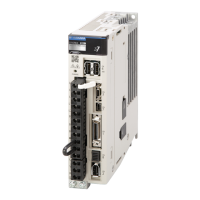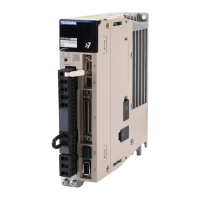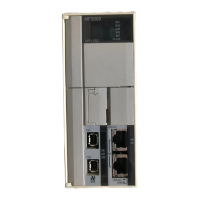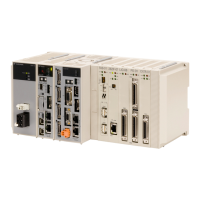8.11 Additional Adjustment Functions
8.11.3 Current Control Mode Selection
8-64
8.11.3
Current Control Mode Selection
Current control mode selection reduces high-frequency noise while the Servomotor is being
stopped. Current control mode selection can be used for the following SERVOPACKs. To use
current control mode selection, set Pn009 to n.1 (Use current control mode 2). This will
set effective conditions for many situations.
8.11.4
Current Gain Level Setting
You can set the current gain level to reduce noise by adjusting the parameter for current control
inside the SERVOPACK according to the speed loop gain (Pn100). The noise level can be
reduced by decreasing the current gain level (Pn13D) from its default setting of 2,000% (dis-
abled). However, if the setting is decreased, the level of noise will be lowered, but the response
characteristic of the SERVOPACK will also be reduced. Adjust the current gain level within the
range that maintains the SERVOPACK response characteristic. This function is always disabled
during torque control (Pn000 = n.2).
3
Effect of Adjustments
The following graphs show the response with and without adjustment.
Step Operation
Inconsistent response
because of friction
Position deviation
High friction
Position reference speed
Before Friction Compensation After Friction Compensation
Position reference speed
Position deviation
Stable response due to
friction compensation
Low friction
Input Voltage SERVOPACK Model
200 V SGD7S-120A, -180A, and -200A
Parameter Meaning When Enabled Classification
Pn009
n. 0 Use current control mode 1.
After restart Tuning
n. 1
(default setting)
Use current control mode 2 (low noise).
If current control mode 2 is selected, the load ratio may increase while the Servomotor is being
stopped.
Important
Pn13D
Current Gain Level
Setting Range Setting Unit Default Setting When Enabled Classification
100 to 2,000 1% 2,000 Immediately Tuning
If the current gain level is changed, the response characteristic of the speed loop will also
change. Servo tuning must therefore be performed again.
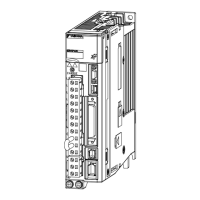
